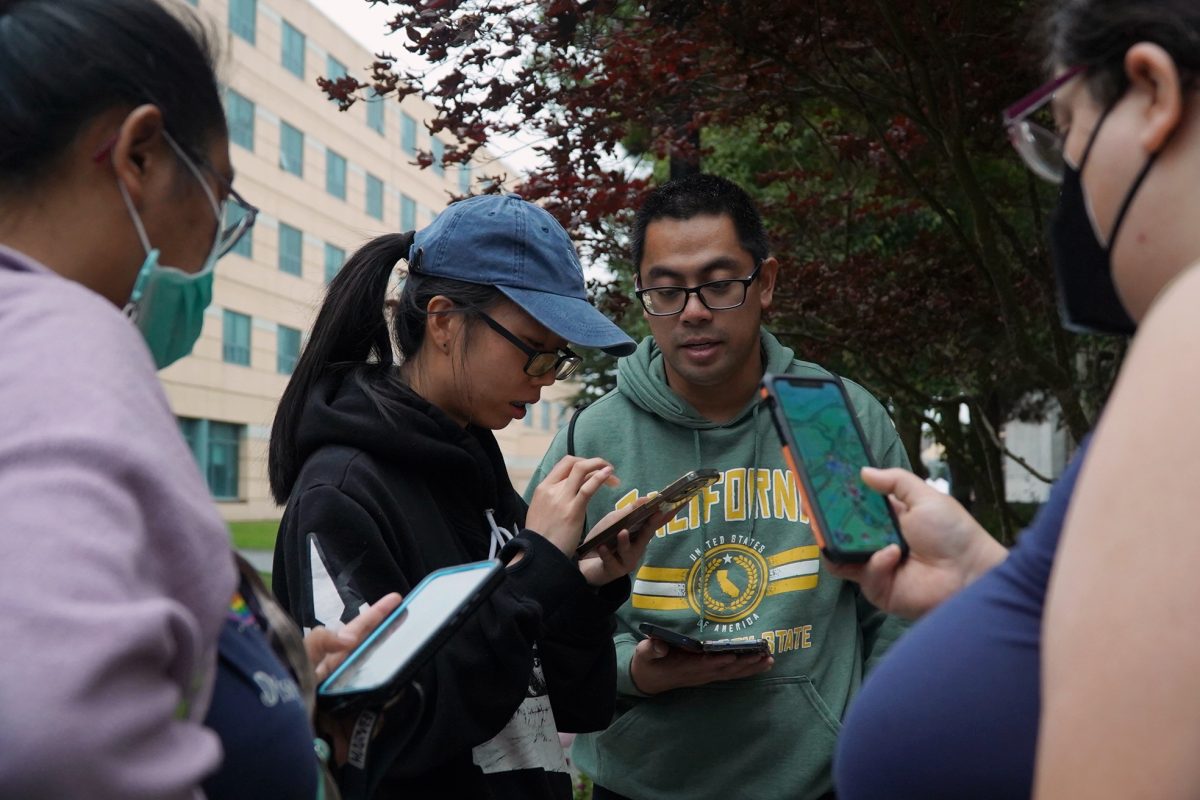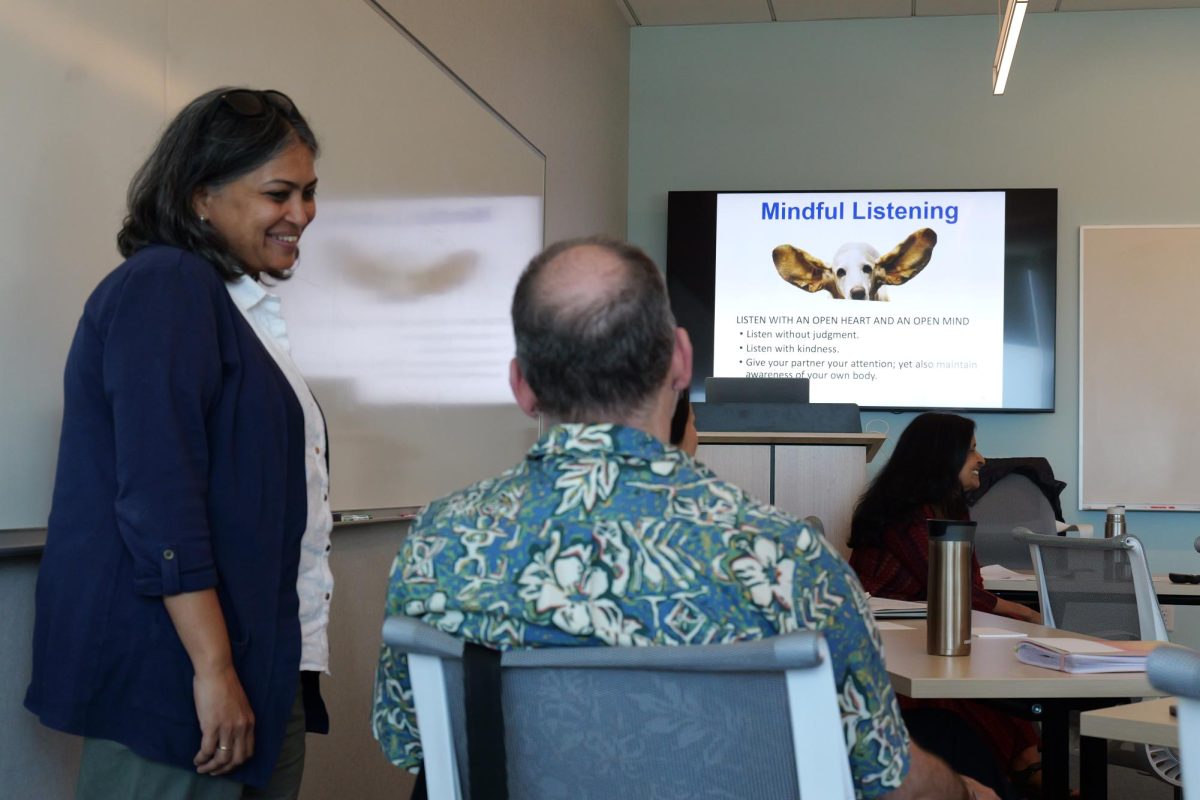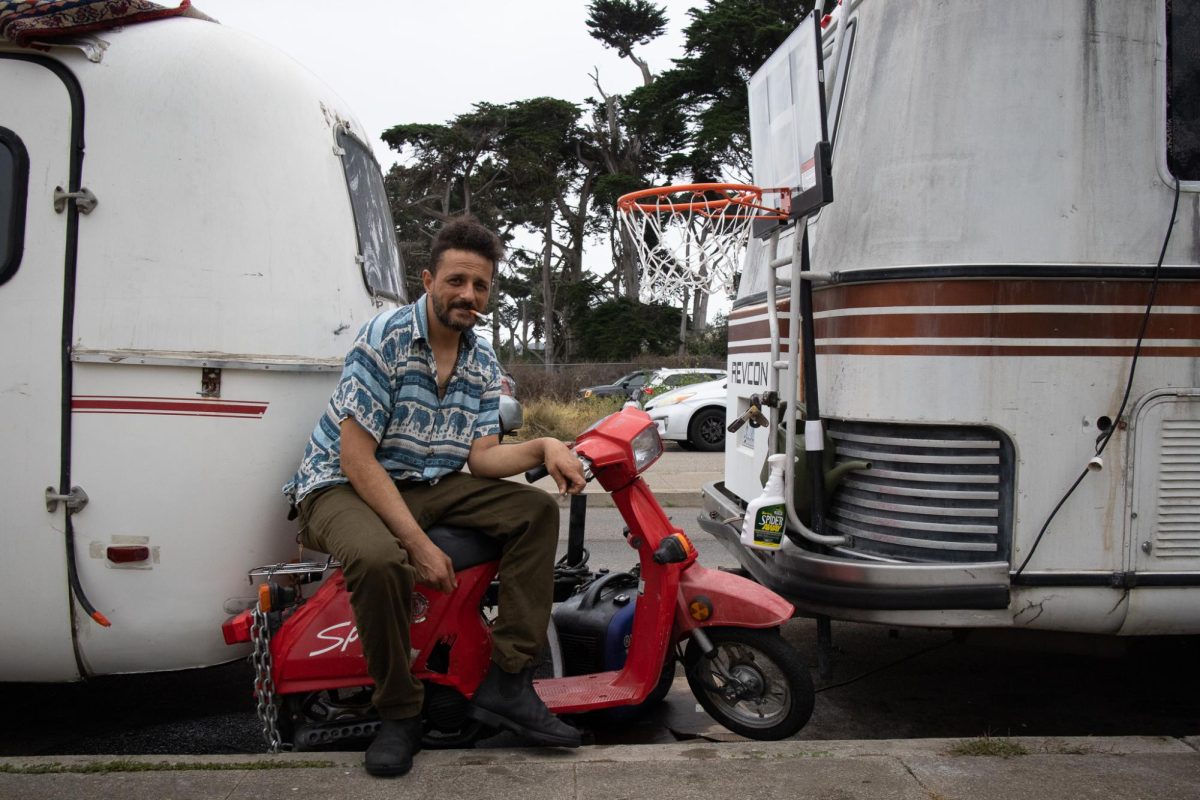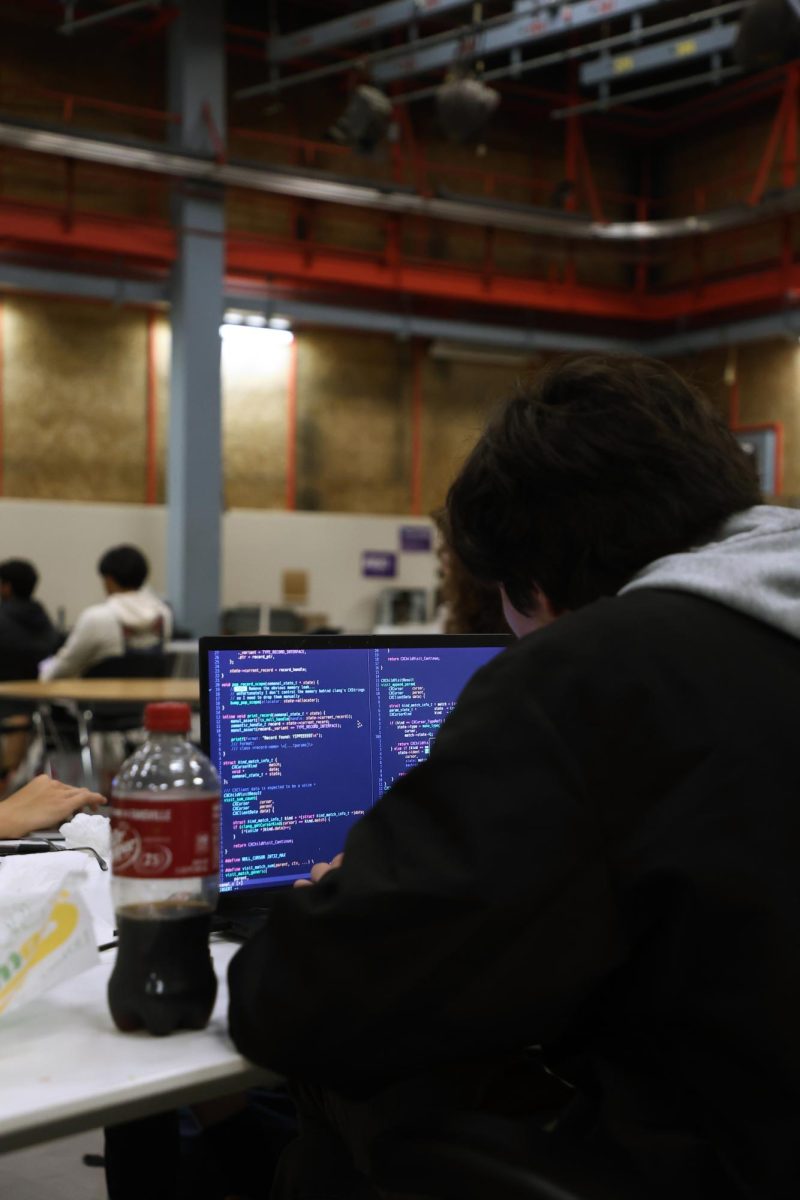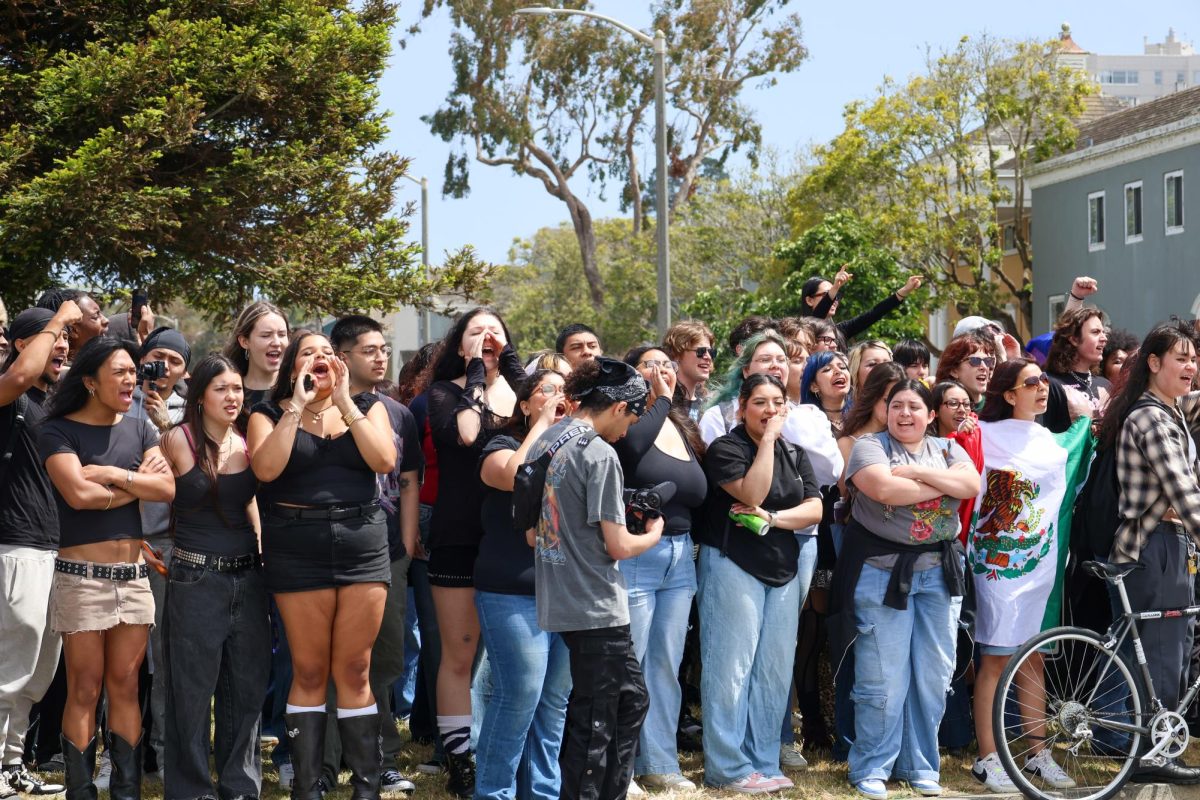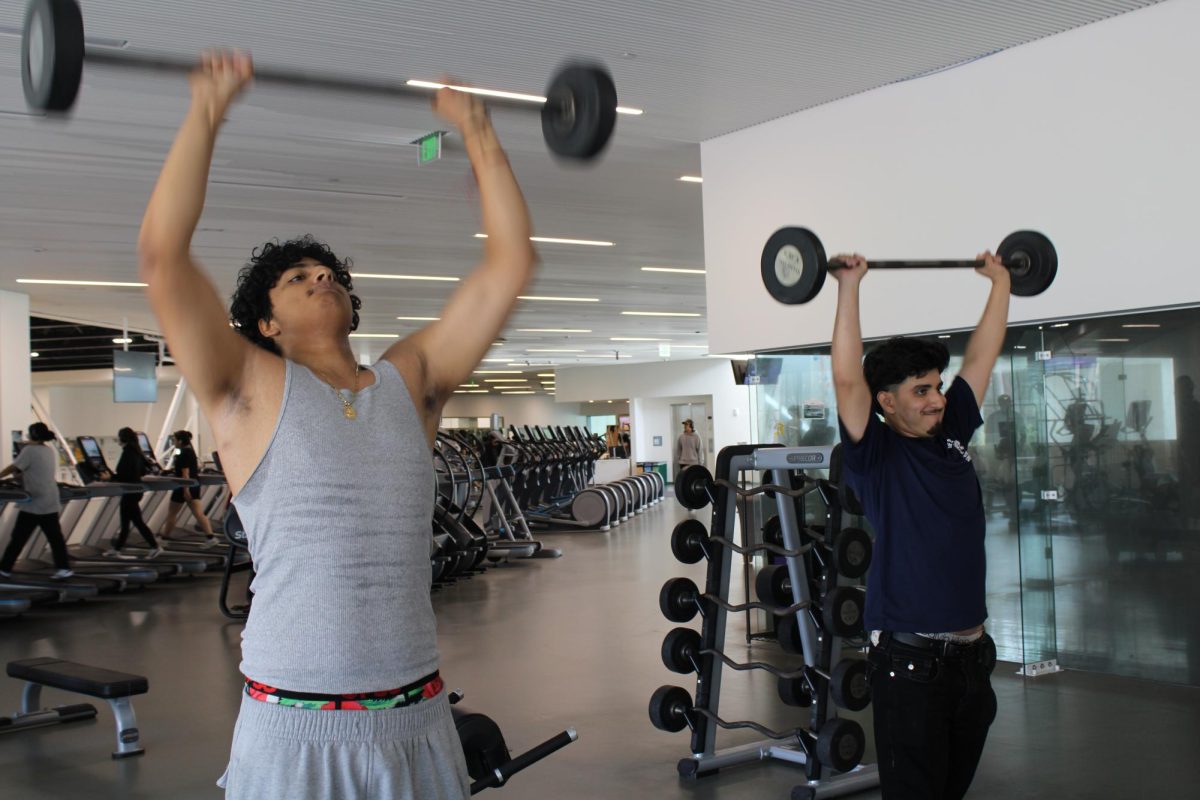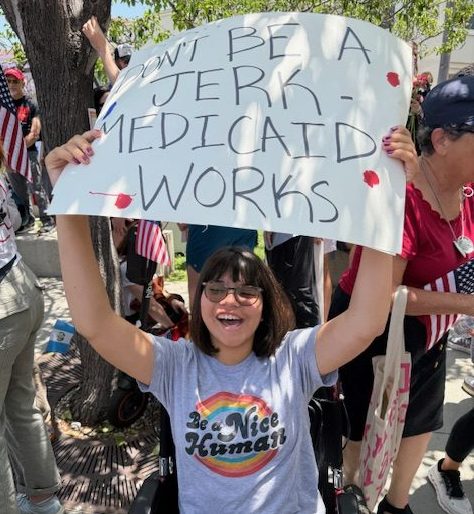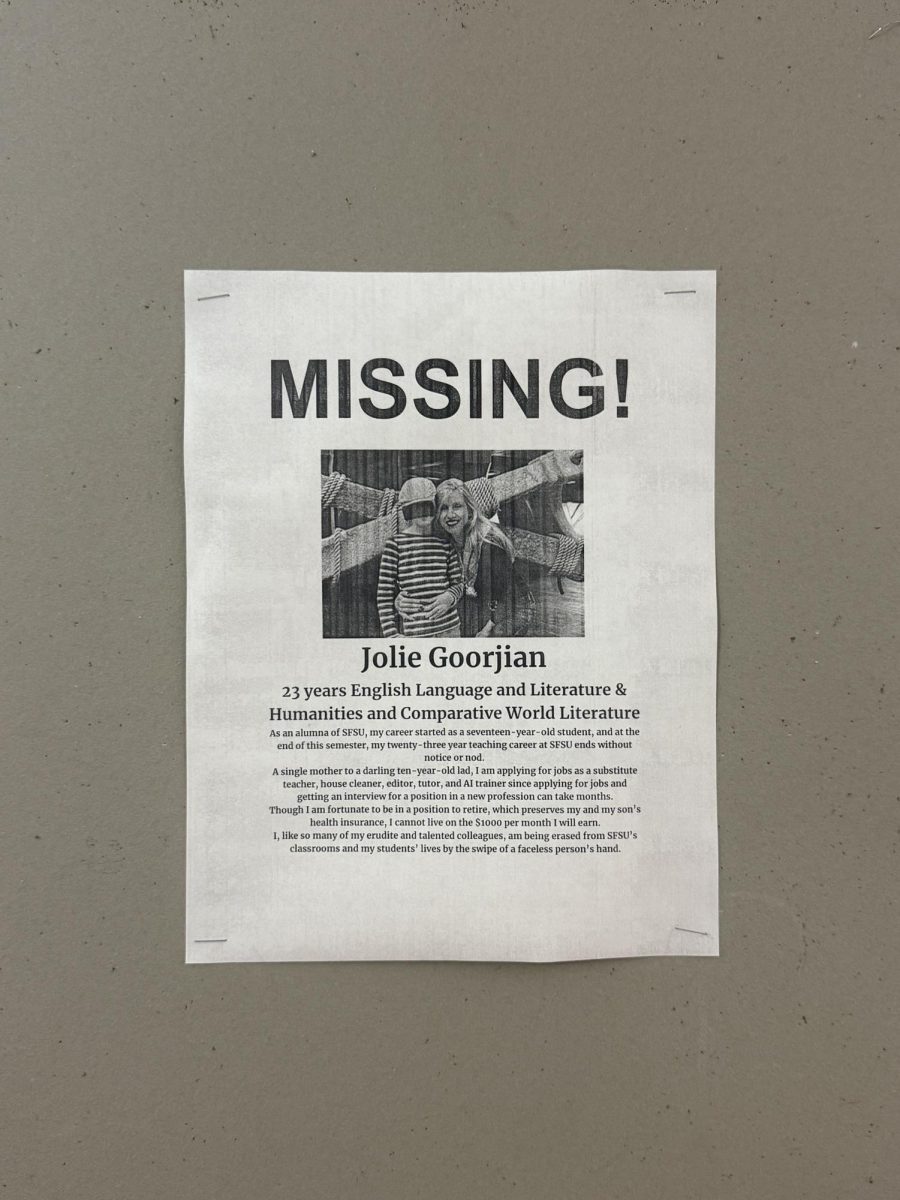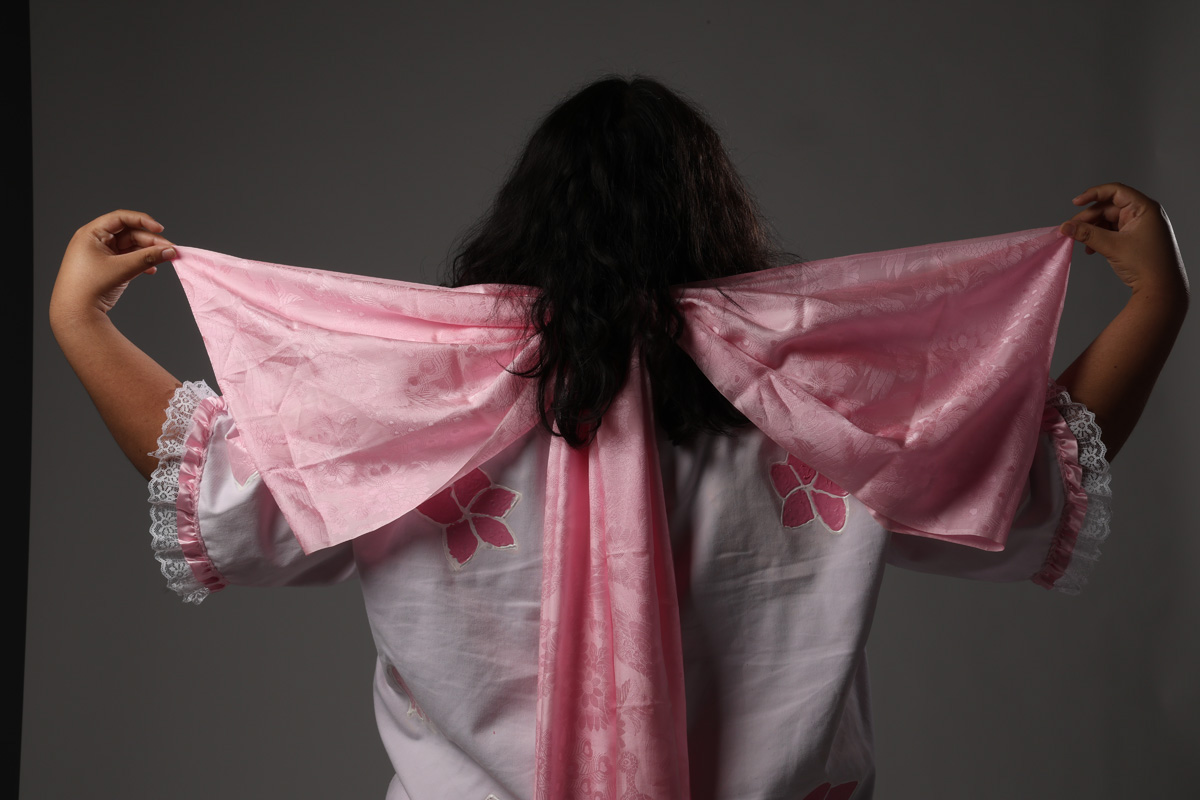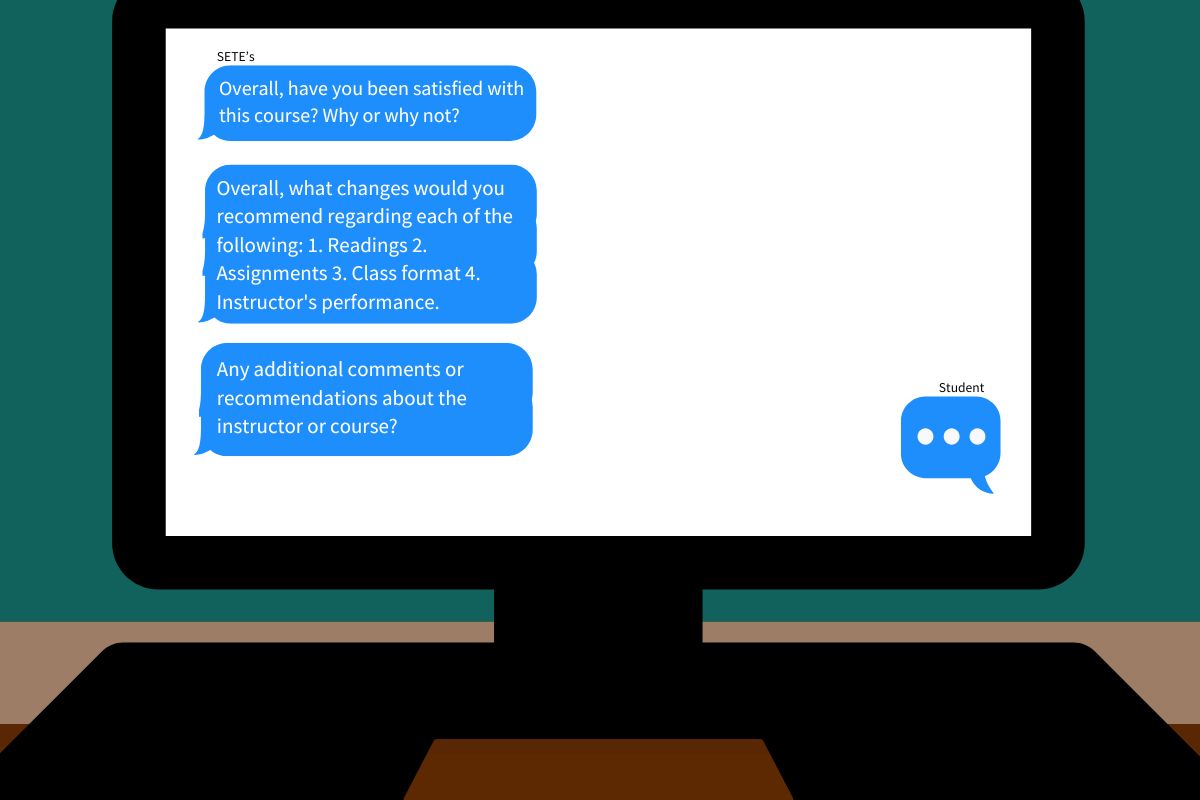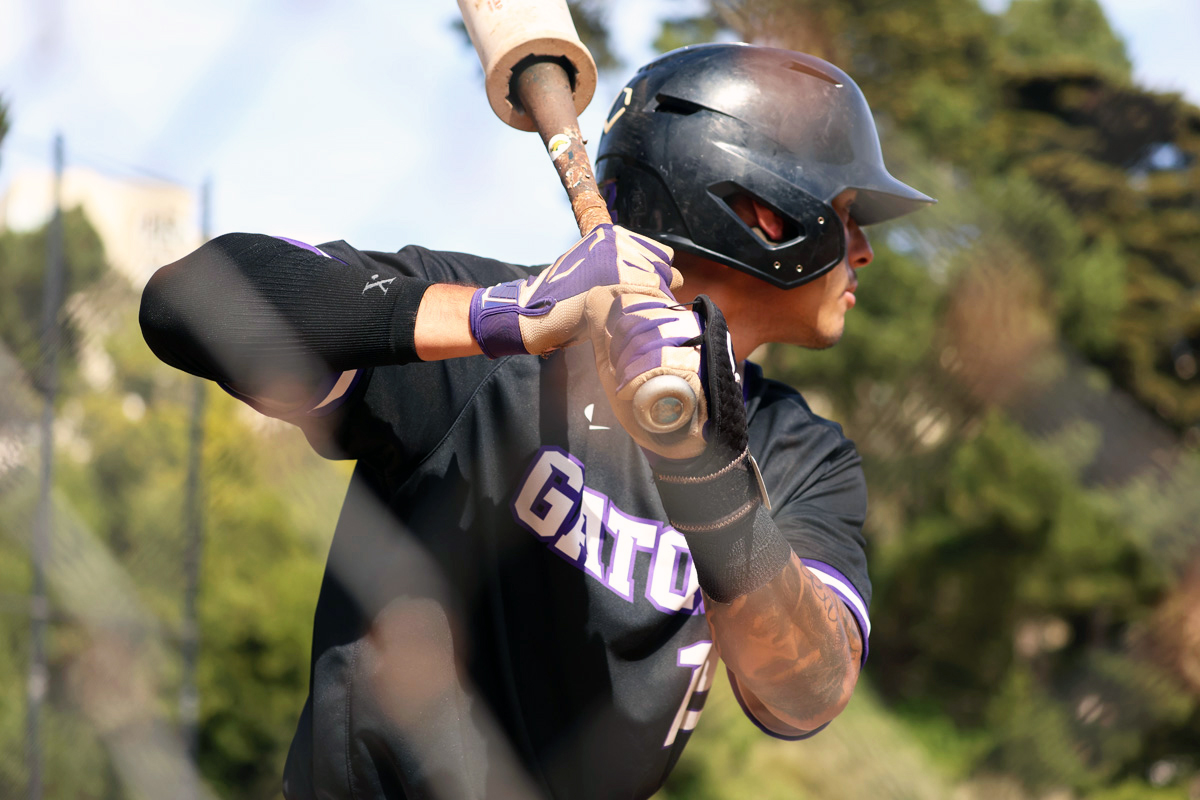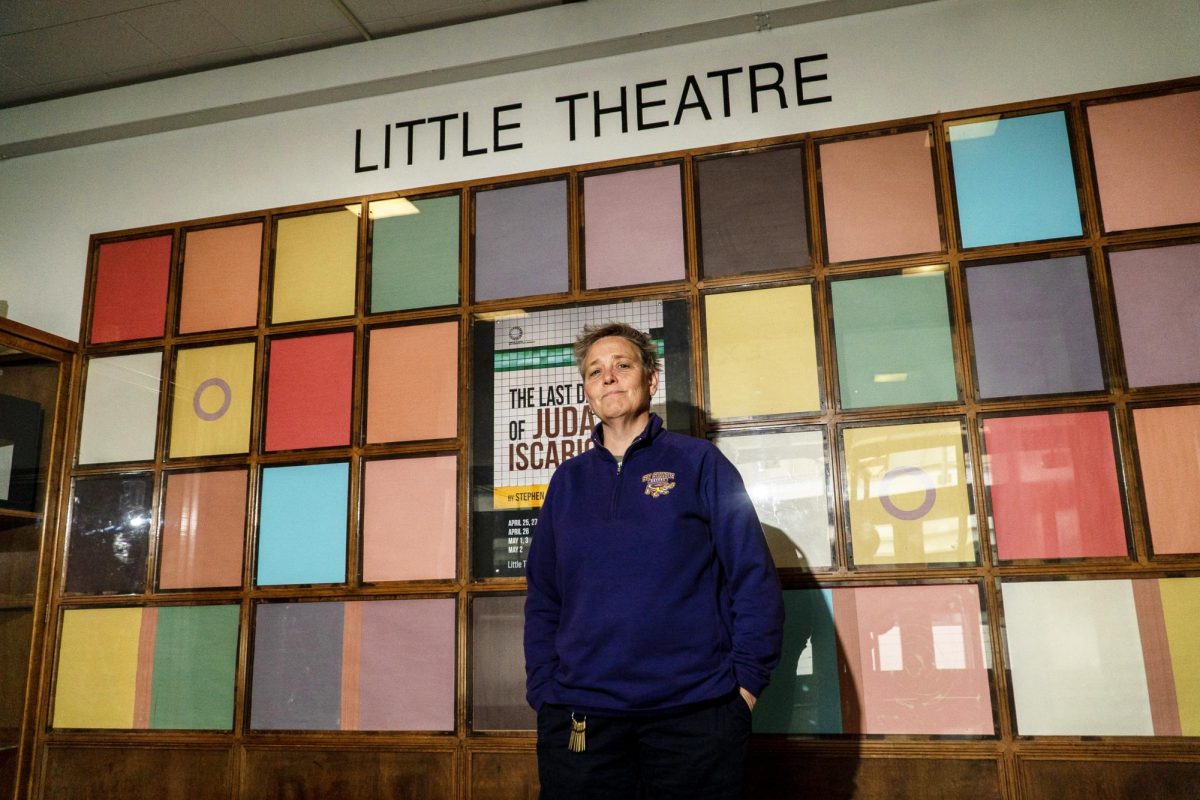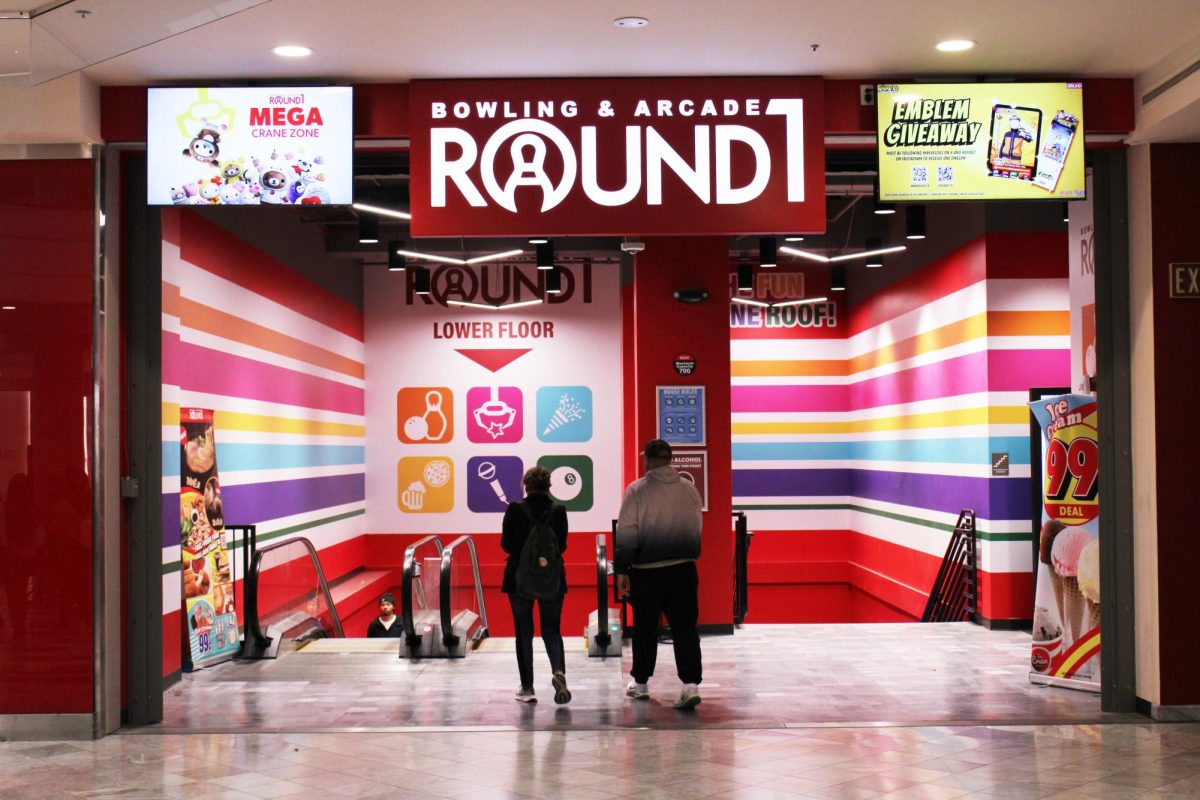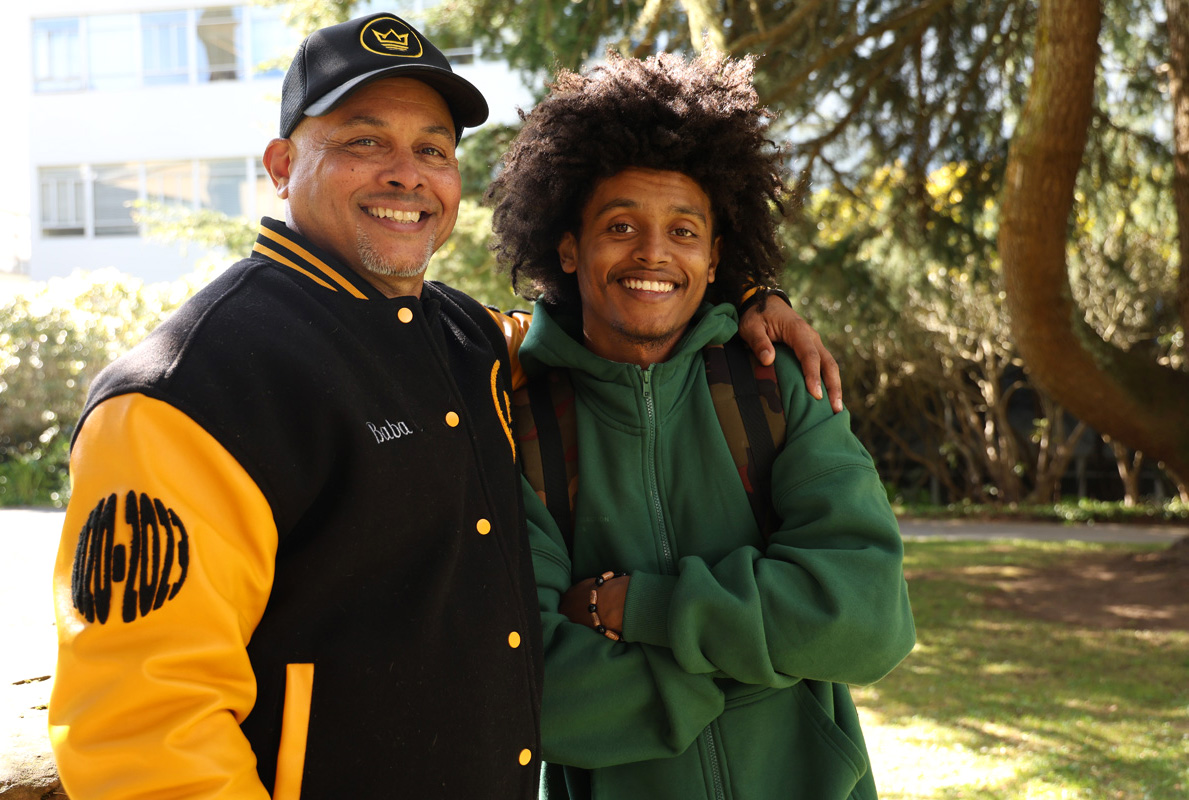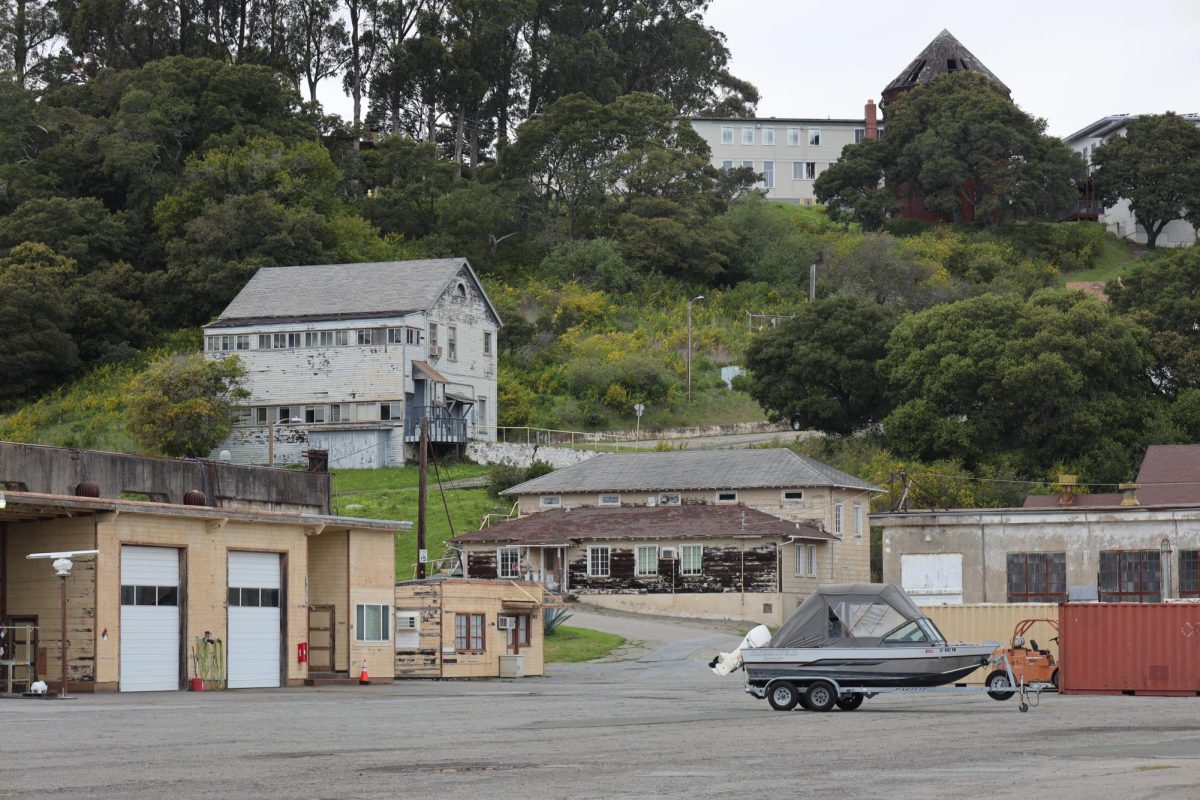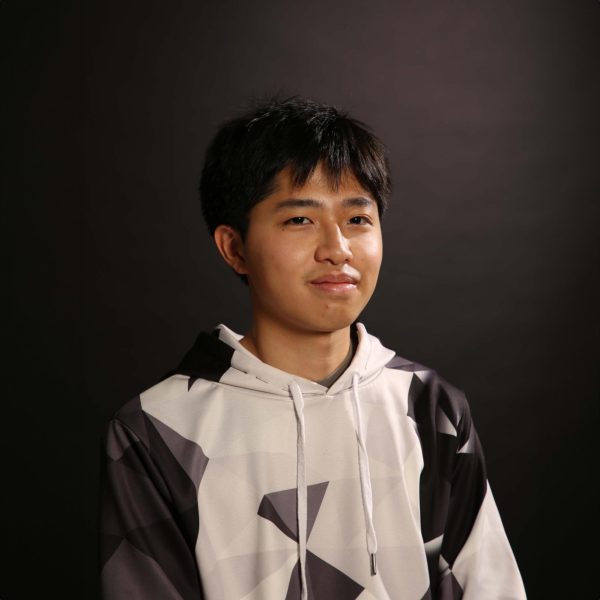Behind the Humanities building, right outside of Taza’s Smoothies and Wraps at SF State, stands an 8-foot-tall time-worn copper statue of a couple dancing. It’s just a statue; what more can be seen?
To Pokémon GO players, their phone is a lens that opens to an augmented reality world of Pokémon. Their phone immerses players into a world of catching, collecting and battling Pokémon.
On the player’s phone screen, the statue digitally converts into a Pokémon gym: an inverted multi-ring tower structure on top of the location, where players meet to digitally battle rival Pokémon teams.
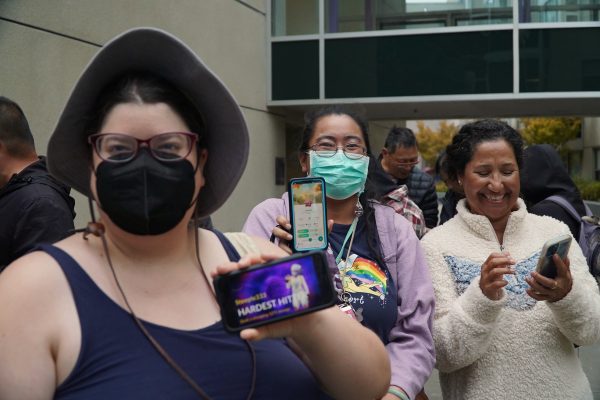
Gwen Northcutt, a Japanese major student at SF State, is the only person huddled in a small corner near the statue on a Wednesday night. They are looking down at their phone, occasionally looking up to the players around the area. With Miniso shopping bags hanging on their forearm, they quickly tap on their phone screen.
Their main objective is to defeat the legendary in-game Pokémon raid boss, Primal Groudon, at the Pokémon gym. Every Wednesday, players have the opportunity to team up and battle a legendary Pokémon between 6-7 p.m. A new legendary Pokémon appears, offering a chance to collect the strongest Pokémon variant for a player’s collection. Raid bosses are categorized by levels and players must team up to battle and defeat the boss Pokémon to capture it.
Northcutt has played Pokémon GO since the game’s debut on July 6, 2016 and has never missed an in-game event. They always try their best to accommodate their schedule to participate in the community days featuring a single Pokémon throughout the whole day and in the Wednesday Raid Hour.
In 2016, Pokémon GO was a sensation. It soared to the No. 1 spot in both Free and Top Grossing Apps on the Apple App Store just one day after its release. Players swarmed around city streets and parks, with their heads down and eyes locked on their phones, continuously swiping upward, trying to capture the Pokémon that appeared on their screen.
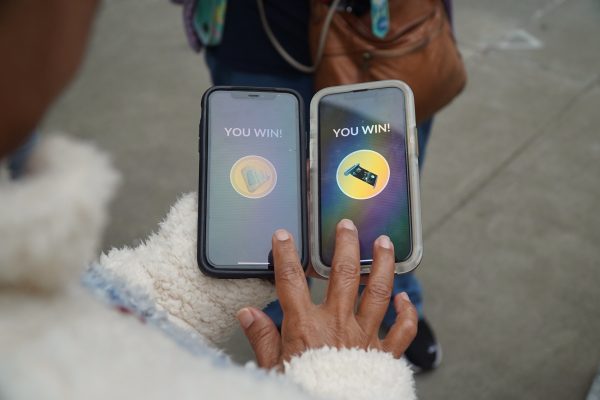
The game immerses players as if they are Pokémon trainers catching, collecting and battling Pokémon. Some players have been dedicated to the game since its initial release and a Pokémon GO community exists at SF State.
In Pokémon GO, there are PokéStops where players can stop to collect free in-game items like Poké Balls and potions to capture more Pokémon to increase in-game experience points, known as XP. These PokéStops include campus hallmarks such as the bronze Gator on top of a basketball in front of the Don Nasser Family Plaza, the granite cast of St. Francis’ head in the center of the quad and the colorful murals in front of the Cesar Chavez Student Center.
While circling around the quad, collecting Pokémon and joining in raids, Northcutt found a community of players at SF State. They can easily distinguish who is a player by observing the way someone swipes at their phone to collect items at the PokéStops, or by the way they throw a Poké Ball to capture a Pokémon.
“Usually if they look at their phones, and if they do a very specific kind of like — the way you throw a Poké Ball, you have to do a little spin or if you’re tapping for like the raid, but that also — Pokémon GO players tend to have extra battery packs so if you see someone connected to a battery pack while playing, that’s a good sign too,” Northcutt said.
Every Wednesday, players gather at the Norma Urcuyo-Siani Dedication gym, located at an ordinary bench near City Eats. From there, players make their way through a gym route, battling the weekly raid boss around campus. Families, neighboring residents, students and a cat in a carrier, walk their usual route toward the last Pokémon gym near the 19th Avenue Muni stop.
Hans Wu, a neighboring resident and active player since 2016, walks with the group. He occasionally brings his cat Mochi in a backpack carrier to accompany him while he plays. Mochi, the gray short-haired cat, hops in and out of her carrier and roams around the screen-tapping players. Wu believes the game itself is different in a way that makes others socialize and go outside.
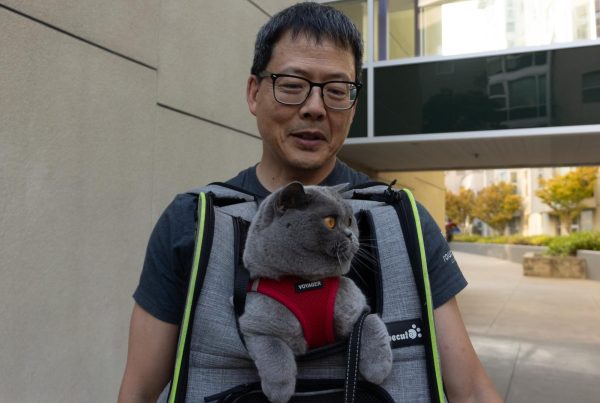
“The nature of the game being, you know, very accessible and pretty easy to pick up and then being social and getting outdoors, you know, a lot of these people are pretty regular and you get to just know each other,” Wu said.
Players huddle together once they defeat the Pokémon raid boss. They step aside to form a circle to reveal a catchable version of the boss raid Pokémon. Everyone places their phones in the middle and at the count of three, tap the screen in hopes of encountering a rare shiny or different colored version of the Pokémon they defeated. One, two, three — no one was lucky.
“But here, you know, elements of the game could be social in addition, right, because you can’t beat these raids on your own,” Wu said. “And so, you know, because of these raids, people started playing a little bit more together and then realize ‘Hey, that social aspect is a plus.’”
Slowly, the group of players walk toward the mosaic-encrusted SF State Tiger statue. Gloria Paz, an SF State alumna who started playing Pokémon GO in 2019, walks with the group. She looks down at her phone and tries her best to capture the Pokémon on her screen. Despite having graduated 25 years ago with a Master of Science in Accountancy, she continues to have fun with others on campus while feeling safe.
“I am semi-retired, and Pokémon makes me walk around and I feel safe here,” Paz said. “It’s mostly safety and also the crowd because if you go to other places, you don’t see other people playing, and here I always find people that I recognize, and I graduated what 25 years ago.”
Ryan Gabuyo, a visual communication design major at SF State, falls behind the group with his head down, capturing the Pokémon appearing on his screen. He has been playing the game since 2016, with occasional breaks.
Gabuyo enjoys capturing Pokémon at various locations, especially during special in-game events like the recent global event celebrating the game’s seventh anniversary, Pokémon GO Fest.
“Campus is kinda the easiest place to go because of all the stops, all the gyms, all the spawns, but for then maybe special events like this past weekend, Pokémon GO Fest, I went to Fisherman’s Wharf and I saw other people and students. A lot of locals go there because it’s very active.”
During Pokémon GO Fest, players gather at locations that have multiple PokéStops and Pokémon gyms to take advantage of the increased chance of capturing a shiny or new Pokémon and battling legendary Pokémon.
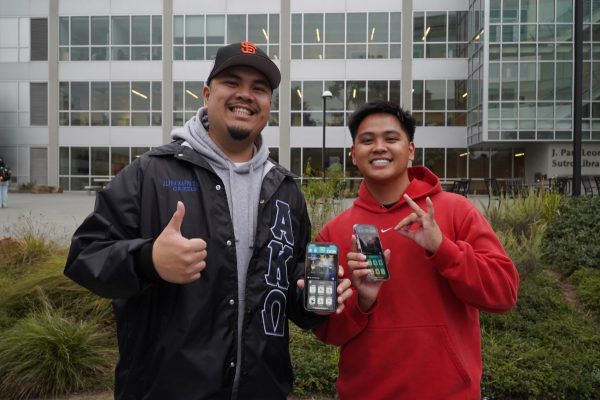
Shiaina Butler, a psychology major at SF State and a recurring player since 2016, plays Pokémon GO around campus but has never joined the group that walks around campus. She enjoys the game and often encourages her friends to play.
“So I think it’s just because there’s always so many things you can do in the game and it’s just constantly with them adding new Pokémon and new features all the time,” Butler said. “It’s never a boring moment playing the game.”
What keeps players coming back to Pokémon GO, you might ask?
The answer varies per player. For some, it’s the health incentive of walking and being active. For others, it’s the excitement of collecting and catching while playing with people who enjoy similar interests — including me.



